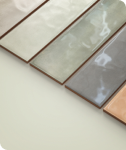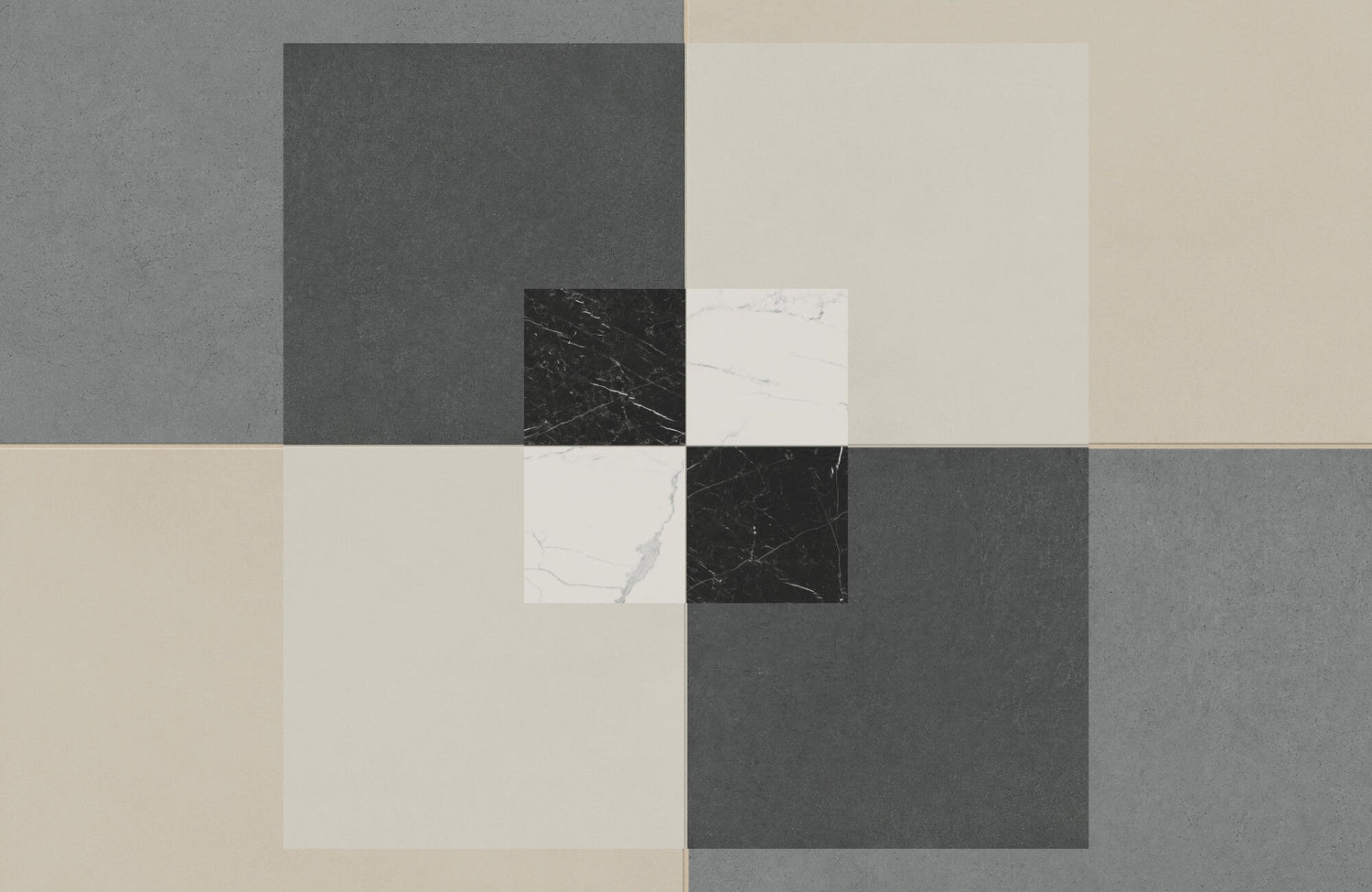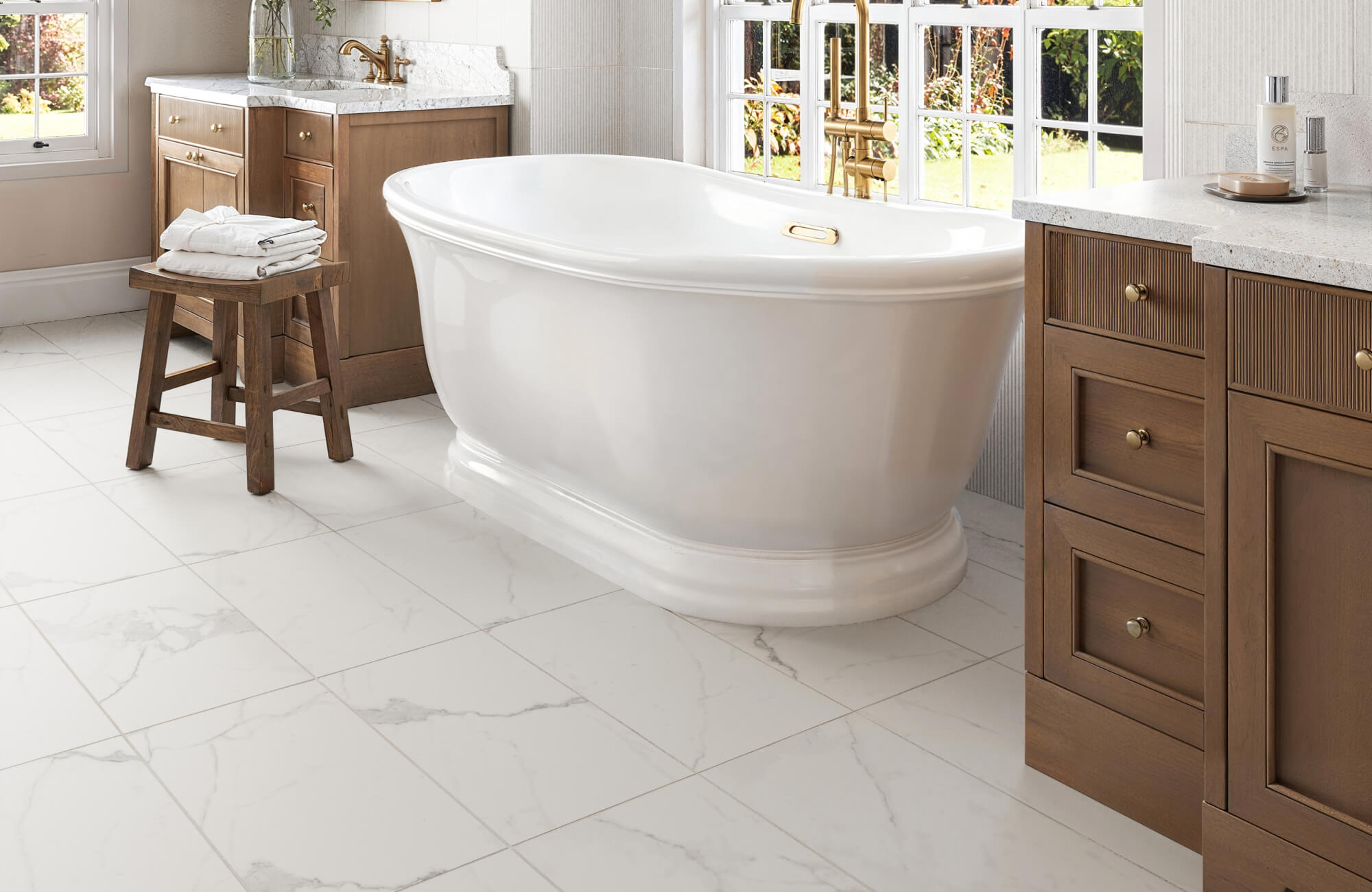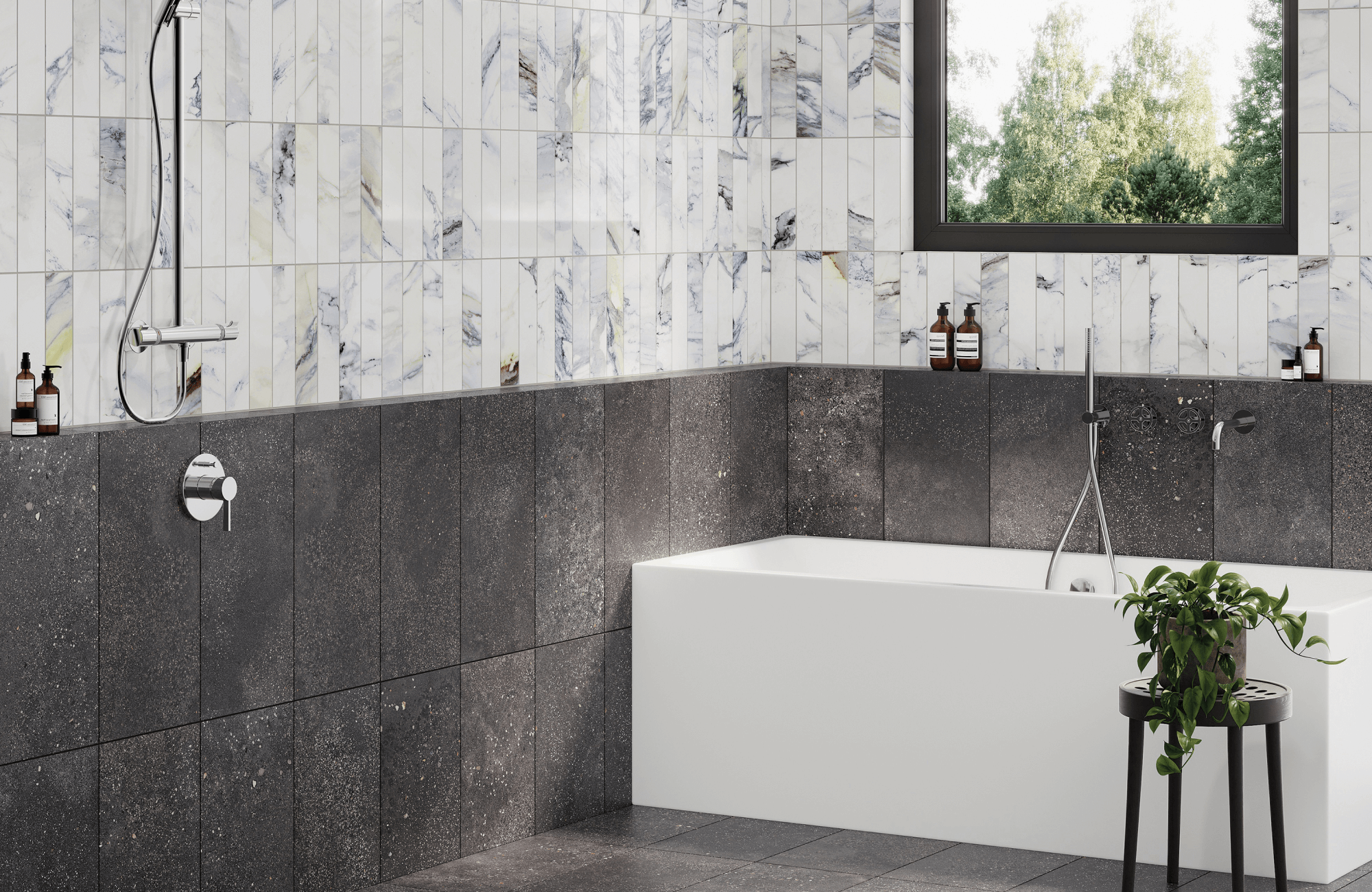In the realm of interior design, checkerboard floors have long captivated many individuals with their timeless elegance and striking visual appeal. The interplay of contrasting colors and geometric patterns creates a captivating focal point that can instantly transform any space. However, to achieve a harmonious and aesthetically pleasing result, choosing the right tile size is paramount.
The size of the tiles used in a checkerboard floor significantly impacts its overall appearance and ambiance. Larger tiles can create a bold and minimalist statement, while smaller tiles offer a more intricate and detailed effect. The chosen size should also complement the dimensions of the room, the existing design elements, and your personal aesthetic preferences. By carefully considering these factors, you can select tile sizes that enhance the beauty and functionality of your checkerboard floor.

Understanding Checkerboard Patterns
The classic checkerboard design, characterized by alternating squares of contrasting colors, offers a wide range of variations to suit different styles and preferences.
Classic Black and White
The most traditional and iconic checkerboard pattern is the black and white combination. This timeless design exudes a sense of sophistication and elegance, making it a popular choice for both modern and traditional homes. The stark contrast between the black and white squares creates a visually striking and attention-grabbing effect.
Other Contrasting Colors
Although black and white is a classic choice, checkerboard patterns can also be created using other contrasting colors. This allows for a more personalized and expressive look. For example, a combination of navy blue and cream can create a sophisticated and nautical feel, while a pairing of red and white can evoke a bold and energetic atmosphere.
Monochromatic Checkerboards
For a more subtle and understated look, monochromatic checkerboard patterns can be used. This involves alternating shades of the same color to create a textured and visually interesting effect. For instance, a checkerboard pattern using soft neutrals like natural stone and dove grey adds depth without overwhelming the space. A great example of this aesthetic is the Palmer 12x12 Checkerboard Matte Porcelain Tile in Natural and Grey (highlighted in the photo above), which pairs warm ivory tones with light grey for a serene, balanced finish. This style is also especially fitting for transitional kitchens or mudrooms where subtle contrast complements rather than competes with cabinetry or countertops.
Psychological and Emotional Connotations
Checkerboard patterns have been shown to have psychological and emotional connotations. The black and white combination is often associated with clarity, order, and decisiveness. Contrasting colors, in general, can evoke a sense of energy, excitement, and creativity. Monochromatic patterns, on one hand, can create a feeling of calm, serenity, and sophistication.

Measuring Your Space
Before selecting tile sizes for your checkerboard floor, it is essential to accurately measure the dimensions of the room where it will be installed. This information will help you determine the optimal tile size and layout to achieve a visually pleasing and harmonious result.
To ensure precise measurements, use a measuring tape or laser distance meter. Start by measuring the length and width of the room, taking note of any irregularities or obstructions that may affect the installation process. If the room has any nooks or crannies, measure these areas separately to ensure that the checkerboard tiles can be fitted seamlessly.
Consider also the overall size and shape of the room when selecting checkerboard tile sizes. Large tiles, such as 18" x 18" or 24" x 24", can create a sense of spaciousness and openness, making them suitable for larger rooms like open-plan living areas or expansive kitchens. In contrast, smaller checkerboard tiles like 8" x 8" are ideal for compact spaces, such as powder rooms or small bathrooms, where they add detail and charm without overwhelming the area. A mid-sized option, such as the 12" x 12", strikes a balance and works well in transitional spaces like hallways, mudrooms, and galley kitchens.
Additionally, the orientation of the room, meaning the direction it runs, its proportions, and how people move through it, can influence the checkerboard layout and tile choice. For example, in a long, narrow hallway like the photo displayed above, a diagonal layout using evenly sized square checkerboard tiles, such as 12" x 12", enhances visual flow and adds depth to the space. The example shown features the Leona 12x12 Checkerboard Polished Porcelain Tile in Calacatta and Nero Marquina, where the bold contrast of white and black marble effect tiles arranged at a 45-degree angle transforms the corridor into a grand visual centerpiece. In contrast, using rectangular or smaller square tiles laid perpendicular to the length can make such narrow spaces feel wider.
Meanwhile, in a square-shaped foyer, diagonal installation of 12" x 12" tiles can break up symmetry and introduce movement. By aligning the checkerboard pattern with the room’s natural flow and sight lines, you enhance both form and function.

Considering Your Design Style
The choice of tile size for your checkerboard floor should be carefully considered in relation to your overall design style. Different styles have distinct preferences for tile size, and selecting the right size can significantly impact the visual appeal of your space.
Traditional Design
Traditional design often favors classic elements and timeless aesthetics. For a traditional checkerboard floor, consider using medium-sized tiles to create a balanced and elegant look. One ideal option is the Palmer 12x12 Checkerboard Raw Porcelain Tile in White and Grey, which features a soft white and gentle grey pairing, two hues commonly associated with vintage-inspired interiors. The matte, raw finish of this porcelain checkerboard tile brings a subtle texture that complements the charm of traditional wood furniture, crown moldings, and classic architectural features.
Contemporary Design
Contemporary design emphasizes clean lines, minimalist aesthetics, and a focus on functionality. Larger tiles can be a great choice for a contemporary checkerboard floor, as they create a sense of spaciousness and modern sophistication. A beautiful example of this is the Leona 24x24 Checkerboard Matte Porcelain Tile in Calacatta and Amani Grey, which features a soft, marble look blend of white and cool grey tones. These common colors, known for their elegant neutrality, complement sleek furniture and large open spaces. In the picture shown above, the checkerboard tiles are laid in a wide, airy dining room, showcasing how the 24" x 24" format enhances the room’s modern architecture and natural light.
Eclectic Design
Eclectic design combines elements from various styles to create a unique and personalized look. For an eclectic checkerboard floor, consider mixing different tile sizes to create a visually interesting and dynamic pattern. This can complement a variety of furniture styles and decor elements.
To further refine your design decisions, utilizing an augmented reality (AR) tool can help you visualize how different tile sizes and layouts will look in your space. This tool allows you to experiment with combinations before making your final decision, ensuring your checkerboard floor aligns with your style and enhances your room's overall design.
The Role of Grout
Grout, the material used to fill the gaps between tiles, plays a crucial role in the appearance and durability of a checkerboard floor. The choice of grout color, width, and material can significantly impact the overall aesthetic and functionality of the floor.
The color of the grout can enhance or contrast with the colors of the tiles, creating different visual effects. For instance, a light-colored grout can help to accentuate the checkerboard pattern, while a darker grout can create a more subdued and classic look. The width of the grout lines can also influence the appearance of the floor. Wider grout lines can emphasize the individual tiles and the geometric structure of the checkerboard pattern, while narrower grout lines can create a more seamless and monolithic effect.
When selecting grout material, consider factors such as durability, stain resistance, and ease of maintenance. Portland cement-based grout is a popular choice for checkerboard floors due to its durability and versatility. However, other options, such as epoxy grout or sanded grout, may be more suitable depending on the specific requirements of the project.
Practical Considerations
When selecting tile size for your checkerboard floor, it's essential to consider practical factors that will impact both the installation process and the long-term performance of your flooring.
Maintenance
Maintenance requirements play a significant role in checkerboard tile size selection. Larger tiles may be easier to clean and maintain, as there are fewer grout lines to scrub. However, smaller tiles can offer a more intricate and visually interesting pattern, but they may require more frequent cleaning to prevent grout discoloration.
For day-to-day care, a pH-neutral tile cleaner is ideal for both porcelain and natural stone. Use a microfiber mop or a soft sponge to avoid scratching the tile surface, and a soft-bristled brush or an old toothbrush for gently scrubbing grout lines. For tougher buildup, a homemade baking soda paste can be effective when applied with care. Avoid acidic cleaners such as vinegar or bleach, especially on stone, as they can damage the finish or degrade sealants over time. Regular sealing of grout, especially in high-moisture areas, also helps protect against stains and simplifies ongoing maintenance.
To ensure proper care across all tile types, it’s essential to follow the manufacturer’s recommendations for cleaning and maintenance. This not only helps preserve the longevity and appearance of your tiles but also ensures that their beauty and functionality remain intact for years to come.
Durability
Durability is another important consideration when selecting materials for a checkerboard floor. Two of the most popular and long-lasting options are porcelain and natural stone.
Natural stone, such as marble or limestone, offers a rich, organic look and unique veining that can elevate the elegance of a space. However, it is more porous and typically requires regular sealing and careful maintenance to protect against stains, moisture, and surface wear. It can also be more sensitive to acidic cleaners and prone to etching or discoloration over time.
In contrast, porcelain checkerboard tile is widely regarded as the most durable and low-maintenance option. Fired at extremely high temperatures, it is non-porous, denser, and harder than natural stone, making it highly resistant to moisture, stains, and scratching. Porcelain also comes in a wide range of finishes, including designs that mimic the look of stone, offering both aesthetic versatility and practical benefits. For those seeking a checkerboard floor that combines timeless style with everyday durability and ease of care, porcelain is the top-performing choice.
Cost is also a factor that should be taken into account. The price of tile can vary significantly based on size, material, and brand. Porcelain checkerboard tiles, which are highly regarded for their durability and low maintenance, generally range from $4 to $12 per square foot, with some premium styles, such as those that mimic natural stone or come in large format sizes, reaching up to $15 per square foot. In comparison, natural stone tiles like marble or limestone typically start at around $10 per square foot and can climb to $30 or more, especially for rare stones or high-end finishes. Although natural stone offers a luxurious, organic appearance, it often comes with additional maintenance requirements and costs, such as sealing. Tile size also plays a role in pricing. Larger tiles may be more expensive on a per-square-foot basis, but because they cover more surface area with fewer grout lines, they may reduce overall material needs and installation labor. Smaller tiles, although typically lower in individual cost, may require more pieces and time to install, particularly in intricate checkerboard patterns. It’s important to evaluate your budget with the overall look and functionality you want to achieve. Consider not just the cost of the tiles themselves, but also the additional expenses such as grout, sealant, underlayment, and professional installation that may affect the total project cost. Weighing these factors carefully will help you make a well-informed decision that balances style, practicality, and long-term value. Choosing the right tile size for a checkerboard floor can significantly impact the overall aesthetic and ambiance of your space. By considering factors like your design style, room size, and visual preferences, you can select tiles that create a cohesive and visually appealing pattern while enhancing the room’s functionality. There’s also no one-size-fits-all solution for checkerboard tile selection, so don’t hesitate to experiment with different sizes and combinations to find the perfect fit for your space. A well-executed checkerboard floor adds elegance and visual interest, making your room feel personalized and captivating. For best results, take time to plan, measure your space, and seek expert advice if needed.Cost
Choosing the Ideal Tile Size for Your Checkerboard Floor









